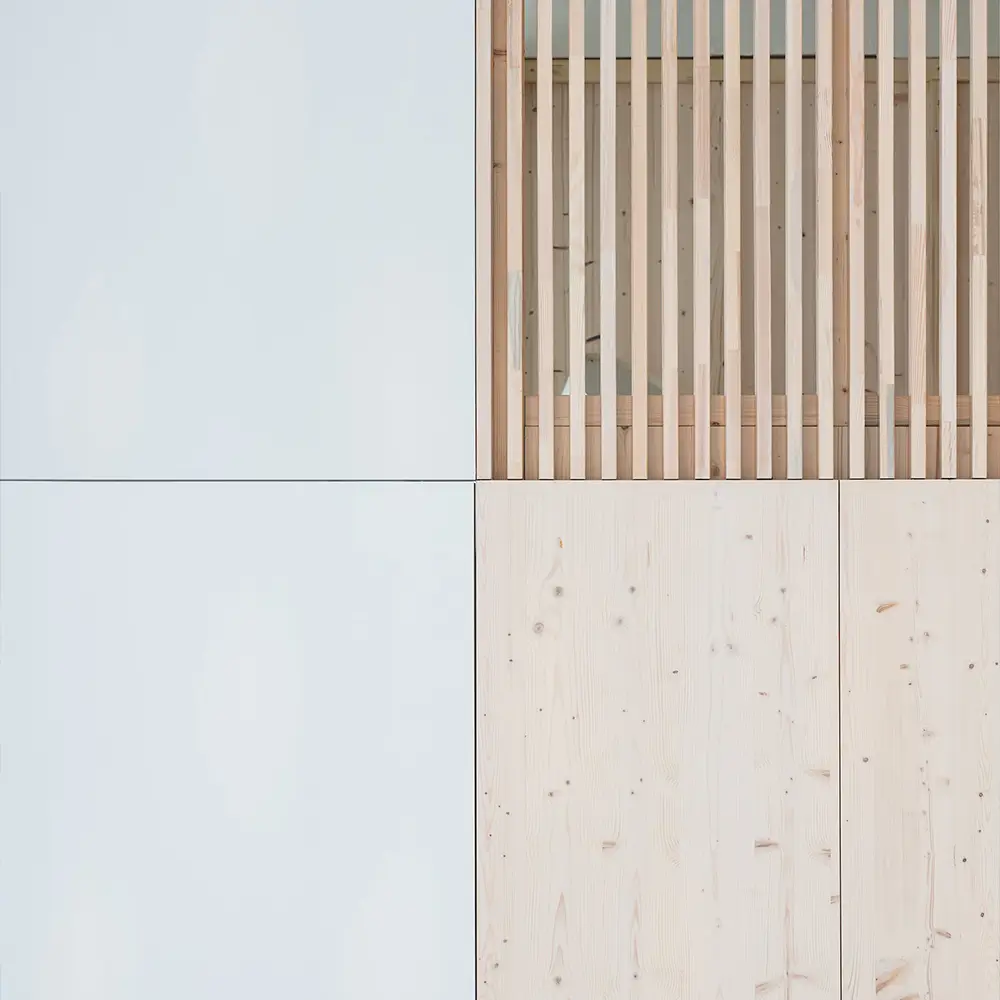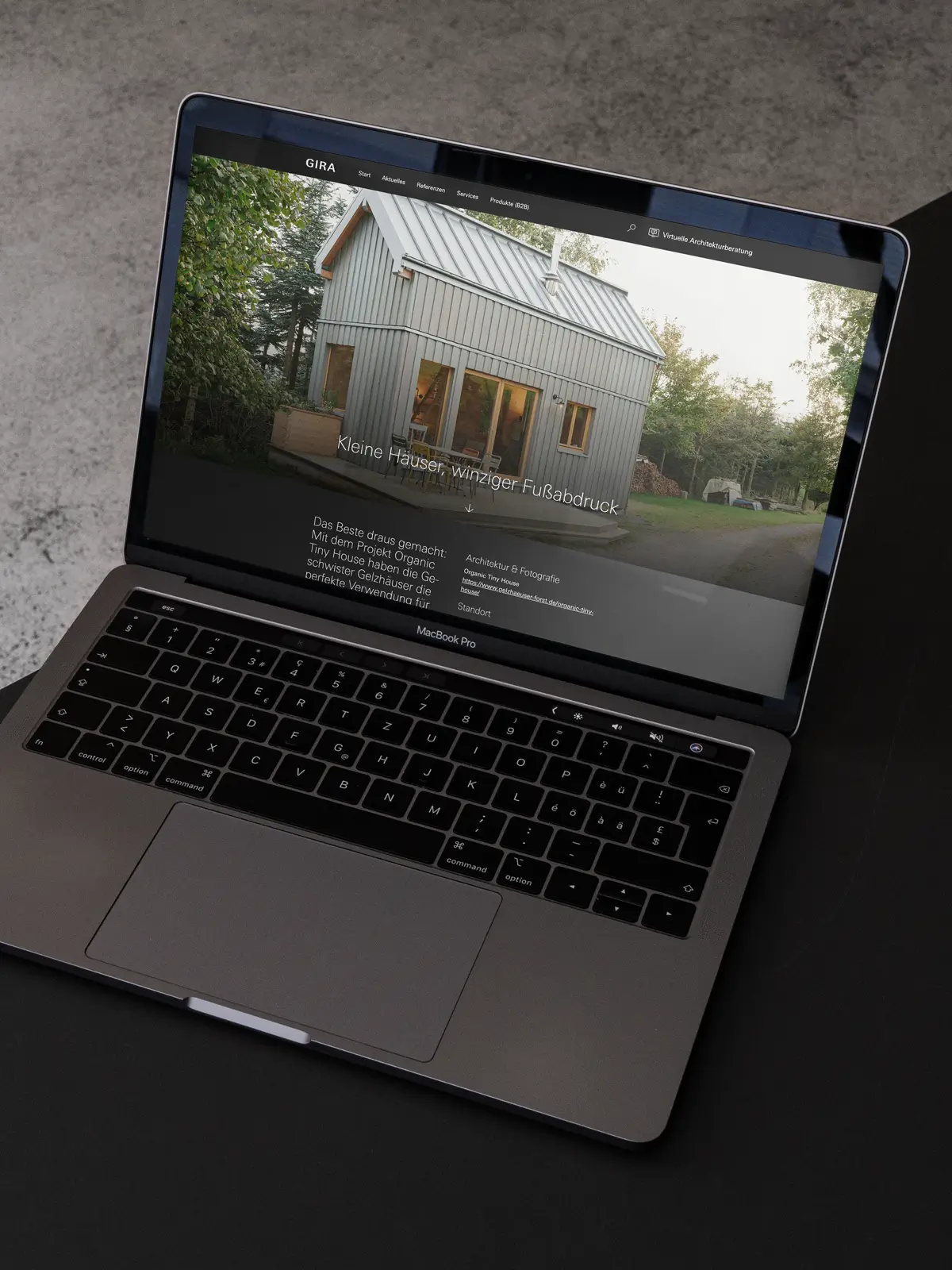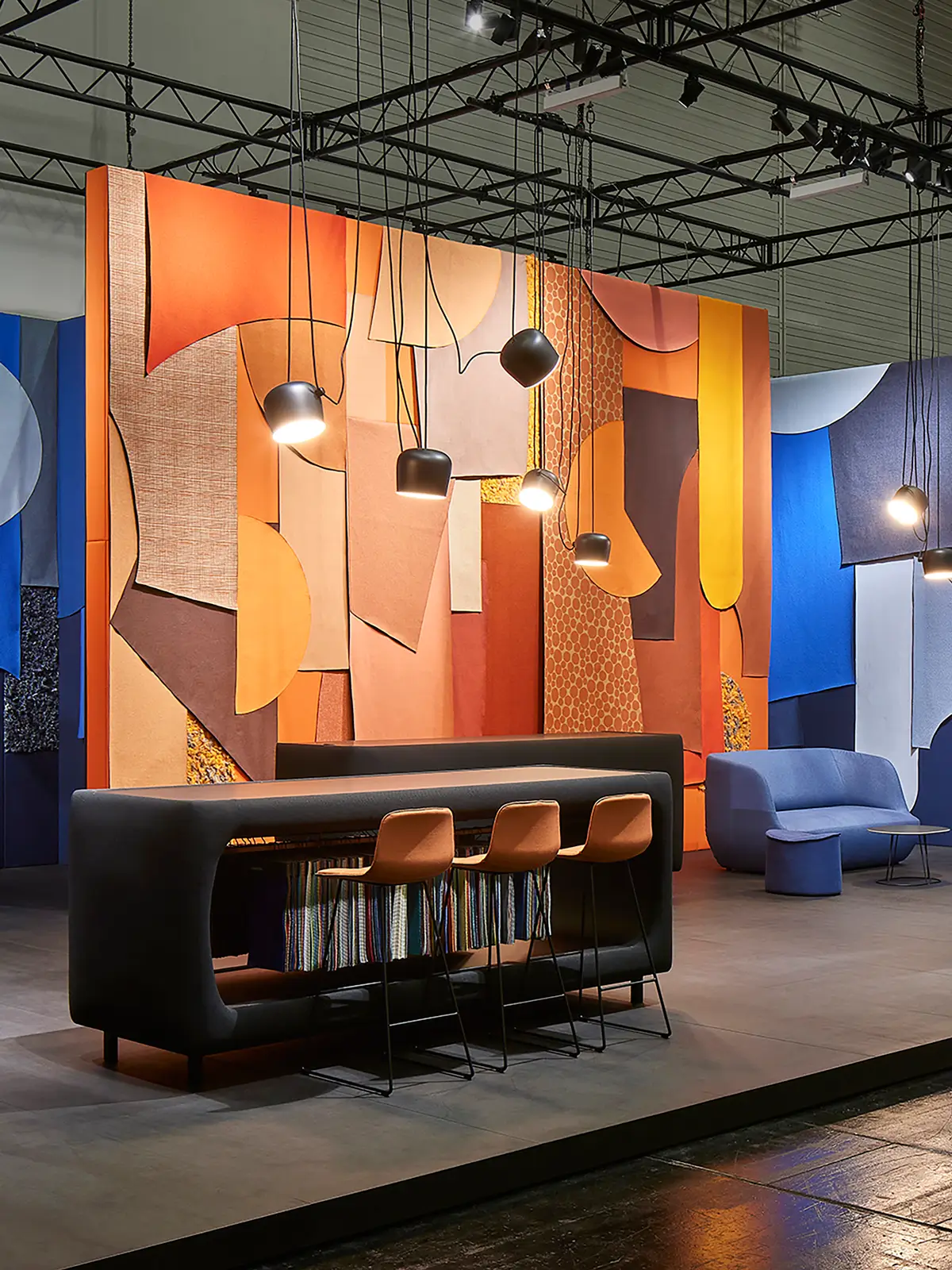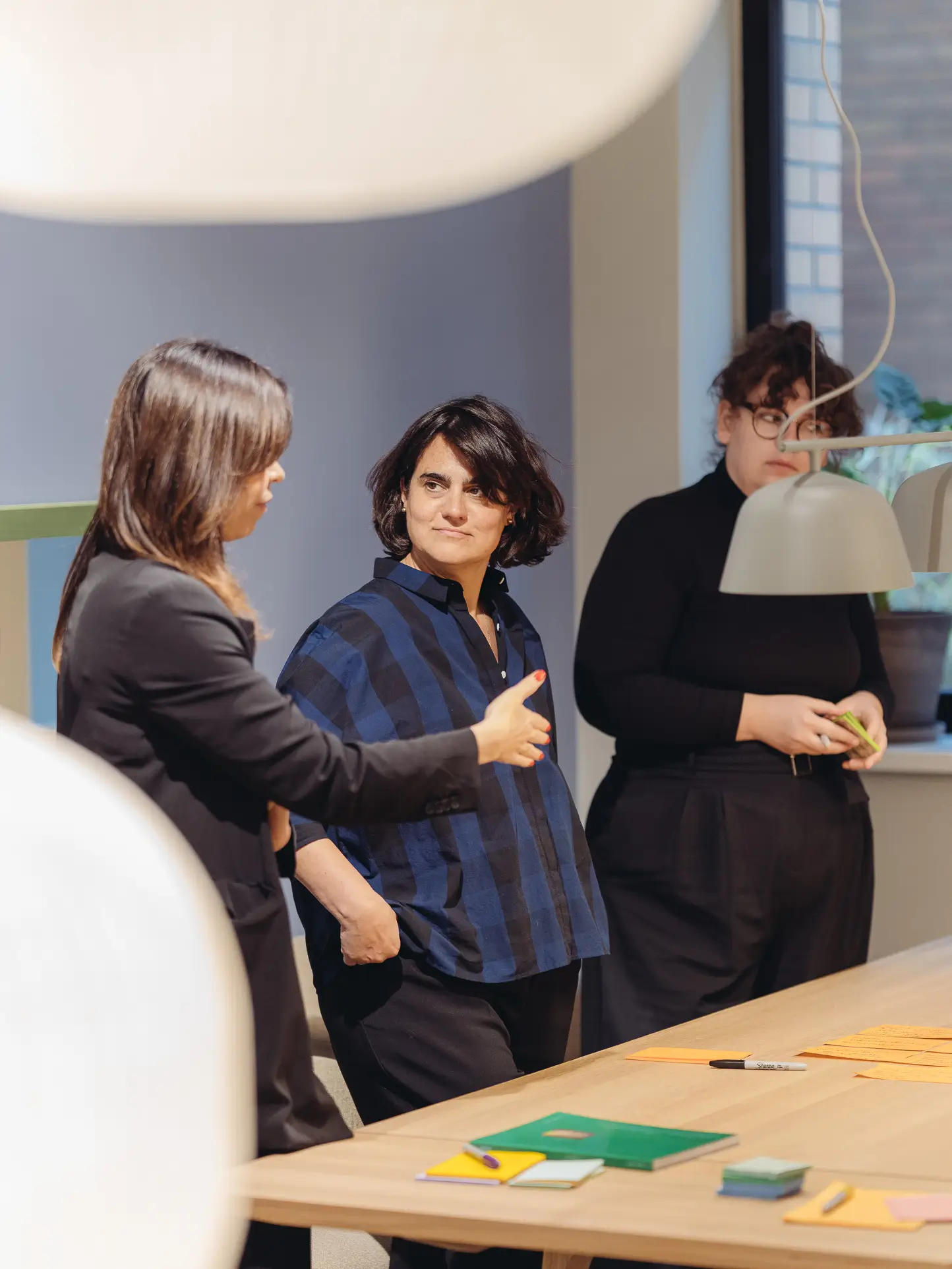More being than appearing: Why we whould (re)embrace simplicity in construction

Foto: Marcus Wend
Technology is the answer, but what was the question? The provocative statement by architect Cedric Price from 1966 seems more relevant than ever 50 years later. Simple, vernacular construction is all the rage. Conversely, the increasing presence of technology also means significant effects on the way architecture is designed and produced. Overlooked for a long time, these have contributed to a growing, collective skepticism of technology, which redefines the relationship between man and machine and the results from it. Back to the roots.
Keep it simple
While some indulge in the abundance of possibilities and promises of modern technology, others advocate for radical reduction. In this context, simple construction does not merely imply a conscious omission of technology; rather, it focuses on a return to the essentials and centers around humans and their needs. This includes appreciating and preserving existing substances, making them future-proof. Often, the true essence of simple construction reveals itself here: what was smartly designed in the past works flawlessly even today, following the motto “adapt, reuse, recycle” to uncover hidden potentials and use them sustainably. Nils Nolting (CITYFÖRSTER) agrees: “Users should ask themselves: What do I really need? We as architects can help answer this question. Before discussing efficiency, we should prioritize sufficiency and effectiveness in our efforts.”
Users should ask the question: What do I really need? We as architects can help them answer this question. Before we talk about efficiency, we should prioritize sufficiency and effectiveness in our efforts.
— Nils Nolting (CITYFÖRSTER)

Renovation or refurbishment?
While renovation focuses on visual and superficial improvements, refurbishment addresses the correction of significant and substantial defects and damages. Whether it's the facade or core, energy saving or accessibility – ultimately, all these measures aim to preserve the value of a building. Restoration, especially relevant for listed buildings, aims to update a property to the latest standards, enhancing living comfort and ultimately increasing its value. Some modernization measures, such as fire safety, are even legally required.
Conclusion
From an economic perspective, refurbishment is worthwhile if it leads to increased market prices through value appreciation, and from an ecological and social viewpoint, if it maintains and preserves existing substances for future generations. The best example: the sought-after old apartments in our cities, which meet the needs of users today as they did in the past, often outperforming even the most modern new buildings in demand.
Sufficiency as strategy
Sufficiency means making do with the essentials and being content with what is necessary.
When talking about simple construction, the theme of sufficiency is always present. It's about striving to minimize raw material and energy consumption. In sustainability discussions, this also means conscious consumption reduction as opposed to technical strategies, such as increased energy and resource efficiency or consistency, i.e., the increased use of renewable resources. Specifically, in terms of architecture, this means:
- Embracing the circular economy
- Foregoing unnecessary technology
- Building adapted to the environment
- Reverting to traditional building methods and local materials
- Constructing as few new buildings as possible
Too often, we forget why certain region-specific building methods and locally available building materials have established themselves and shaped entire regions over centuries. Today, nearly any construction method can be realized anywhere in the world – but at what cost? How much technical assistance is required, and how much energy is consumed?

Less is more
In the spirit of sufficiency, it's also about users questioning what they truly need, what habits can change, and where they can cut back. The principle of simple construction taps into this mindset, ultimately allowing for lower construction and energy costs without compromising the functionality and aesthetics of our built environment, as numerous projects demonstrate. Thus, a "less" in tangible terms can lead to a "more" in value and quality of life.
According to Nils Nolting (CITYFÖRSTER), the concept of simple construction encompasses various aspects:
"Technically, it could be about simple construction methods. At the material level, we talk about robustness, homogeneity, material justice, local material sourcing, and low energy consumption for the production and procurement of building materials. Regarding building services, it's about balancing high-tech and low-tech.
- How much or how little technology is needed for the building to function?
- Where do we need technical equipment, and where not?
- What is necessary, what is 'just' comfort, or what limits use despite significant effort?
Architecturally and spatially, it's about sufficiency and aesthetics. Questioning standards in terms of 'what do we really need?' is key here.
- How many square meters are necessary for a particular use?
- Can it be less if we design a good space?
Thus, simple construction has an aesthetic dimension that seeks design answers and is also linked to the question of simple but good living. Simplicity in terms of simple living is not something suppressed or limiting but allows for a life removed from status-driven lifestyles. Simplicity denies the imitation of pre-made, unattainable images. It requires a certain form of humility, though it is not meant to be ascetic. Rather, simplicity is a way to enhance quality of life. It does not oppose luxury but can evoke a different, richer kind of luxury. This luxury can only be produced through an openness to things. Simplicity means seeing potentials and transforming meanings."
The complexity of simplicity
As building owners and users increasingly despair or lose sight of the complexity of construction and building technology, planners struggle with the growing demands on
- Structural integrity,
- Heat, moisture, fire & sound insulation,
- Hygiene & health,
- And general user comfort.
The rising number of building laws, regulations, and standards leads to a nearly impenetrable jungle of bureaucracy instead of having a guiding effect. The result is a significant susceptibility to planning and execution errors. In practice, research, and teaching, therefore, there is a counter-movement towards simple construction. That omission also needs to be learned is shown by the focus of study at the TUM – Technical University of Munich. Florian Nagler's online lecture at BDA Hamburg can be viewed here.
"Knowing the properties of building products liberates." Florian Nagler, architect and professor at TUM, repeatedly emphasizes in his teaching and research the opportunities that simple, largely pure construction offers. With three research houses in Bad Aibling, he and his team have thoroughly explored simple construction in all its aspects and gained insights that are often not surprising but now verifiable.
Key principles from his perspective include:
- The purity of materials
- The minimum is often the optimum (e.g., ratio of window to wall area)
- For human behavior in and with spaces, such as ventilation, there's no need for (technical) replacement.
3 questions to Philipp Lionel Molter of studiomolter
studiomolter is an interdisciplinary workshop dedicated to research and practice in architecture and design. Their design approach for our built environment is based on a profound cultural and geographical perspective.
What do you understand by simple construction?
I personally prefer the term "Lowtech," not wanting to limit myself to minimizing technology per se. Rather, I'm interested in simple construction with simple details, simple floor plans, and a straightforward building organization, with little or no heating, ventilation, and air conditioning (HVAC) technology, and little (and if so, then intelligent) measurement, control, and regulation technology (MCR).
Why should we (re)build simply – do we even need to build simply?
Architects have relied too heavily on integrating building technology in recent decades. Cedric Price asked 50 years ago: "Technology is the answer, but what was the question … ?" We should ask ourselves this question again today. However, under the term "simple construction," some colleagues have created very dreary buildings in recent years. As architects, we must be aware of our cultural responsibility. I'm not just talking about "architectural empathy"; rather, I want to encourage colleagues to conceive buildings that express joy and hope architecturally in their surroundings.
How do simple construction and renovation fit together in your view?
Perhaps the colleagues Lacaton et Vassal from France have answered this question best: their work, awarded the Pritzker Prize, demonstrates the simplicity of constructive details in renovation projects – like the Cité du Grand Parc in Bordeaux, which generates enormous spatial quality.
3 Questions to Patrick Batek of Batek Architects
BATEK ARCHITECTS stand for clear design that gives spaces their freedom. Based on material and design, functional, rigorously thought-out, and forward-looking spatial concepts emerge.
What do you understand by simple construction?
"Simple Construction" for us means, for example, using materials intended for other purposes. For our project VAAY, we used horizontally mounted C-profiles from drywall as boards, and for our project SCH52, we exposed the structural timber.
Why should we (re)build simply – do we even need to build simply?
We should build simply primarily because of sustainability and with an eye on cost factors.
How do simple construction and refurbishment fit together in your view?
The term "simple" fits especially when limiting oneself to reduced refurbishment. That means maintaining the basic idea and only updating the object to the latest technical standards. Not "overbuilding" and imposing a forced, current architecture on it.
3 Questions to Nils Nolting of Cityförster
CITYFÖRSTER was founded in 2005 as an internationally active and interdisciplinary partnership of architects, engineers, and urban planners with a team from over ten nations. Founding partner Nils Nolting and his colleagues design, plan, and realize buildings, urban structures, and public spaces for the compact, connected, productive, and climate-adaptive city.
Why should we (re)build simply – do we even need to build simply?
If we want to meet the challenges climate change poses to our industry, we need to build less – and simpler. However, this does not mean there would be less work for architects – on the contrary!
We need to build more within the existing stock, using less and more climate-friendly materials, and also fewer different materials within a building. This also helps us think about our buildings in a circular way. An architecture transparent in its materiality is also a more circular architecture. Reduced complexity of component structures makes buildings "understandable" even many years after their construction. This leads to better practical decomposability, which in turn enables the reuse of materials in a second life cycle.
How do simple construction and refurbishment fit together in your view?
We can learn a lot about simple construction from existing stock. Especially in older stock, simple construction was naturally practiced. These buildings are made from a limited number of building materials, often built in a recyclable manner, generally healthy to live in and harmless. And since the concept of "waste" is a relatively recent invention, resource conservation was a given: The local sourcing of building materials was a matter of course, everything was used, nothing wasted, and construction was done sparingly.
Simple-designed architecture – as we find, for example, in buildings from the founding period – is also spatially capable of meeting changing user needs over time.
Refurbishing old stock requires, on one hand, an understanding of historical construction methods to be able to constructively continue them. On the other hand, it must be considered how current, newly added requirements (fire safety, thermal insulation, sound insulation, etc.) can be met while remaining true to the material. Simple construction methods and an understanding of historical construction methods help here. And, of course, sometimes current standards need to be questioned if a solution is to be simple.
What opportunities does refurbishing existing substances offer us?
Refurbishment, conversion, and modernization are preferable to demolition and new construction for several reasons: first, the "grey energy" – the energy required to construct the buildings – accounts for about half of the total energy balance. Additionally, with existing buildings, infrastructures (roads, pipelines, utilities, public transport, etc.) are already in place. These have a negative impact on the overall emissions balance beyond the building itself in new development areas. Moreover, new construction "on the greenfield" often promotes climate-damaging mobility behavior. Thus, developing our cities' interiors, including refurbishment and modernization, is preferable to external development for many reasons. Through densification strategies (extension, addition, expansion), the additional living space required can be organized without sealing further areas and generating additional traffic.
Projects you should know
Hotel Vesper
Hotel Vesper | Noordwijk, Holland • 2014 | studiomolter & Miriam Irle & STUDIO AKKERHUIS
- Sought: A transformation for the former Hotel Clarenwijck from 1904.
- Found: An individual and private boutique hotel overlooking the North Sea.
- Insight: The quality of the existing does not disappear, even if it acquires a patina. However, creativity, color, and a delicate touch also help.



Recycling house
Recycling House | Hanover • 2019 | CITYFÖRSTER
- Sought: An experimental residential house to test the possibilities and potentials of various types of recycling in a real-world laboratory.
- Found: A circular and resource-conserving planning approach, which was awarded the Special Prize for Sustainability at the German Facade Prize 2020, among others.
- Insight: Recycling and high standards of comfort and design are not mutually exclusive.




Apartment SCH52
Apartment SCH52 | Berlin | 2019 | BATEK ARCHITECTS
- Sought: The transformation of a classic factory floor in Berlin-Kreuzberg into a loft apartment for a family of five.
- Found: A group of boxes installed as a house-within-a-house construction in the 240 square meter floor.
- Insight: A too-perfect finish would have harmed the industrial charm of the loft.

.jpeg)



Further reading
Looking beyond one's own horizon, it's always worth considering adjacent fields as sources of information. Here are some tips from our editorial team for further reading, deepening, or listening:
- The blog Postwachstum serves as a showcase and idea workshop for a growth-independent society and invites lively debate on the platform. Additionally, the DGNB blog features an interesting post about the winner of the German Sustainability Prize Architecture, including interviews with the project participants.
- For those who want to delve deeper into the topic of "Simple Building," the guidebook of the same name by Florian Nagler is highly recommended. Also published by Birkhäuser: Atlas Renovation – Maintenance, Conversion, Extension. Available in hardback or electronic form.
- The brand association of medium-sized lime sand brick manufacturers, KS-Original, hosts the podcast "simplicity – einfach bauen" (simplicity – simple building), addressing questions such as: What does it mean to "simply" build? Why is it so important to simplify the entire lifecycle – from design planning through building operation to demolition? And is it even possible when standards, diverse requirements, and economic interests seem to have an ever-increasing influence on the actual construction process?
Simple building – simple working
At hej.build, we see in these approaches a fundamental understanding both in dealing with existing structures and with resources in any form. Whether it's about existing structures in a system, a city, or a product line, it's always about adapting, optimizing what's there, and only in the rarest cases about a radical break.
We also optimize our collective working method almost daily and ask ourselves where we can sensibly save resources and simplify processes. Being allowed to work from a location of our choice, as far as possible without paper and traveling by train, are obvious examples of how we envision contemporary and simple working.
Just as simple building responds to the properties of the materials, the resources, we at the hej.team are repeatedly surprised and interested in the resources and properties that each hej.member can contribute to our common goals.
The major difference between Simple Building and Simple Working probably lies in the fact that building in its simplicity can do with as little technology as possible, while we can only keep our working individual and simple with the technical possibilities.
More about our way of working can be found under the Insights »New Work«.
Note: This article was originally published on our former search engine for architectural continuing education (architekturfortbildung.de) and has now been expanded to include hej.topics.




